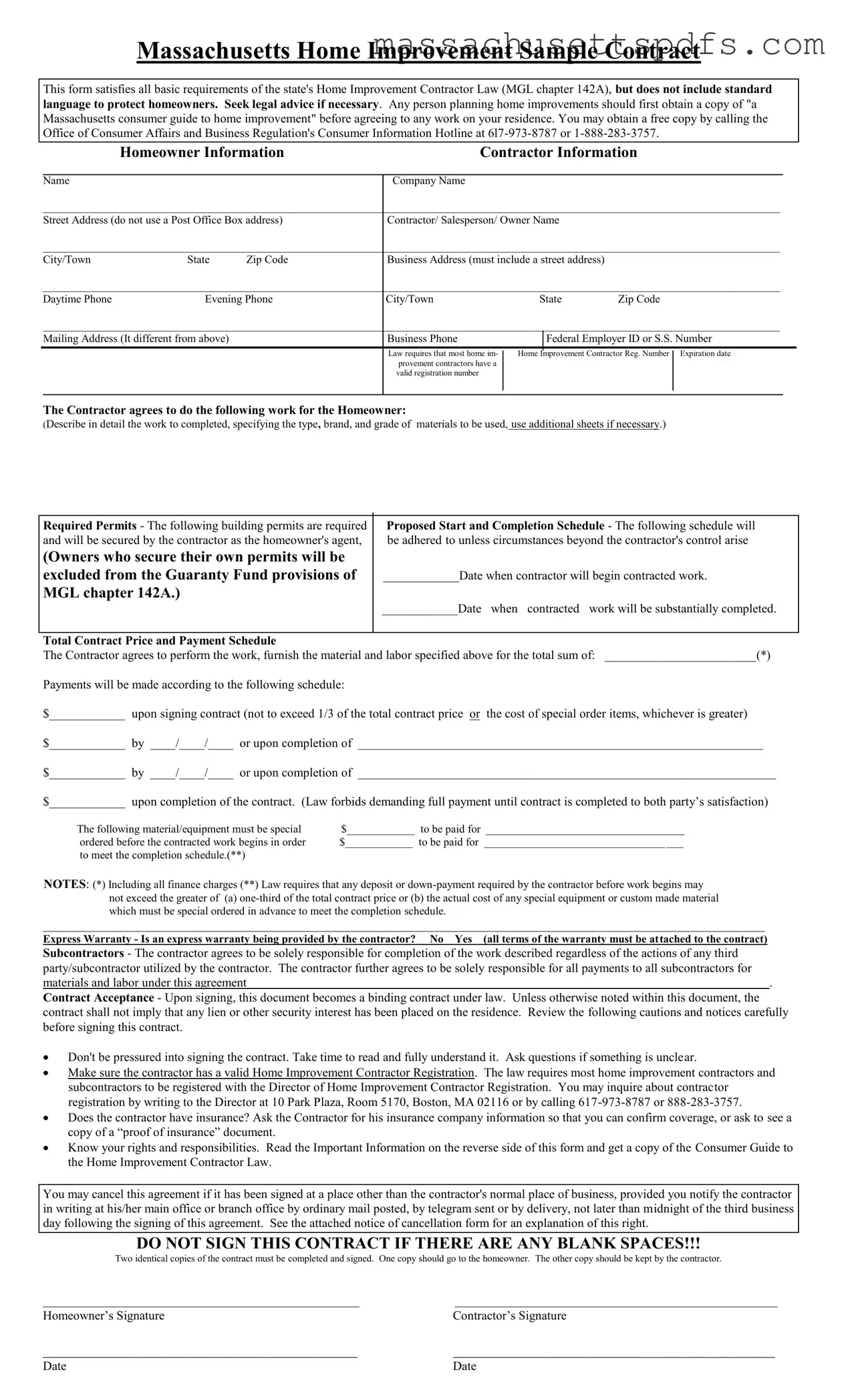Official Massachusetts Sample Template
The Massachusetts Sample Form is a standardized contract designed for home improvement projects, ensuring compliance with the state's Home Improvement Contractor Law. This form outlines essential details such as contractor responsibilities, payment schedules, and homeowner rights. Before starting any home improvement work, it's crucial to fill out this form accurately; click the button below to get started.
Launch Editor Here
